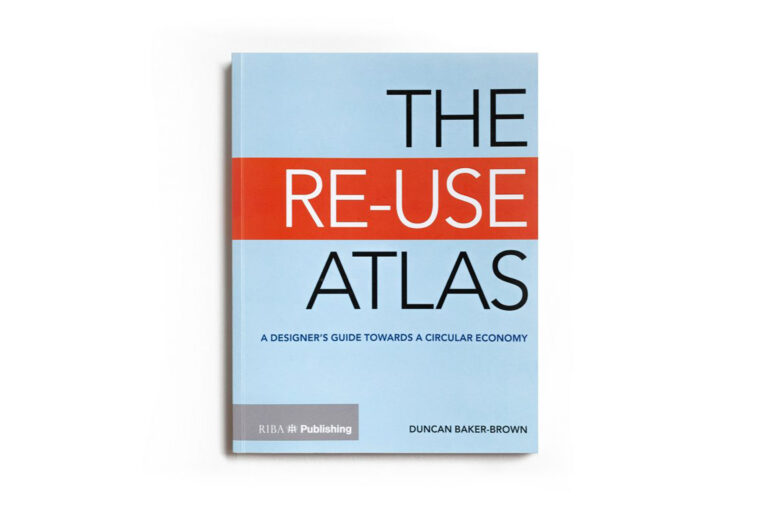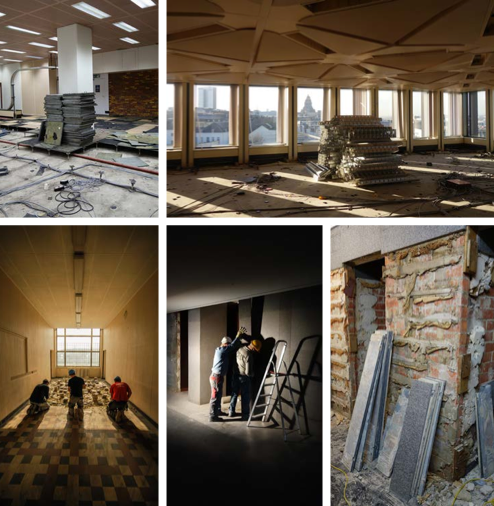News: 16th March 2017
An Insight Into the Re-Use Atlas No. 8
The Re-Use Atlas: A designer's guide to the circular economy
Author: Duncan Baker-Brown RIBA FRSA
Entry number 8
Would you like to visit the previous entry? Click here
Since the Waste House was completed in June 2014, Duncan Baker-Brown has been working on a book that considers the challenges and opportunities presenting designers and clients who wish to ‘mine the anthropocene’, i.e.work with existing places, communities and stuff previously mined and processed. Duncan’s book is entitled ‘The Re-Use Atlas’. It will be published in May 2017. However, this blog will give people the opportunity to read parts of the book before the publishing date. Enjoy!
Part 2 of the atlas is divided into four chapters, taking the reader on a step-by-step route towards closed loop systems. Each ‘step’ contains a number of case studies that capture some of Duncan's first-hand research, gleaned from interviewing over fifty people involved in inspiring projects from around the world that tackle recycling, re-use, the reduction of resource use, and finally closed loop systems. These case studies are supplemented with one longer interview with a significant protagonist from each of the aforementioned steps. Therefore unless stated otherwise, any comments quoted from people in the case studies have been taken directly from interviews Duncan had personally with them.
Step 3 Reducing the amount of material used
Case Study - Rotor & Rotor DC
I have interviewed more than 100 people for this book, all of them fully engaged with different aspects of designing systems and products that, to a greater or lesser degree, can be described as being on the way towards a circular economy. However, I have found that the team at the architectural practice Rotor, perhaps more than anybody else I have spoken to, are happy to try to unpack and critically evaluate the real challenges, intellectual and otherwise, facing 21st-century human settlements that endeavour to exist in harmony with the planet. However tedious the research or dismantling/making processes are, they will take the project on if they believe it will further their understanding of the potentials for a reuse economy.
I first came across Brussels-based Rotor when a colleague of mine, architect Anthony Roberts, reported back to me from the 2010 Venice Architecture Biennale. He had just stumbled across Rotor’s ‘Wear’ exhibition for the Belgian pavilion. It looked more like a 1960s installation by an minimalist artist and Anthony was struck by the precision of the curating, the beauty of the artefacts displayed, and the ‘sheer amount of white space on the walls’. Entitled ‘usus/usures’, which literally means ‘make/wear down’, this exhibition considered the traces of use and wear on everyday building. Once you get past their beauty, these familiar objects reveal the effects of years of contact with human hands or feet. By being placed in the rarefied environment of a gallery, these objects were reappraised by visitors as abstract artefacts. Once their true ‘self’ became apparent again, one could re-evaluate them and consider the narratives behind, for example, a red carpet from a social housing apartment in Antwerp that clearly demonstrates the position of a pivot chair and a table. Although Rotor is keen to point out that this was not an exhibition about reuse, one can clearly see that it is linked to the company’s focus on reappraising the value in discarded artefacts. According to Rotor, the exhibition and accompanying publication was ‘the result of an intensive investigation carried out in Belgium, analysing “wear” as a material phenomenon and as an agent capable of influencing actions. Wear is approached not as a problem in itself, the result of an error of conception that must be avoided at all costs, but as an inevitable and potentially creative process.’ On reading this statement, one can clearly see the link to Rotor’s current focus on material reuse, or ‘deconstruction’ as they call it.
Rotor’s ‘Deconstruction’ programme is the most pertinent part of its practice for this book. ‘Rotor Deconstruction’ is a hands-on decade of research on the flows of materials in numerous industries, including construction. The programme is now a separate cooperative company that has the skills and knowledge to focus on the careful dismantling of parts or the whole of a building and then sell on the reusable materials.

